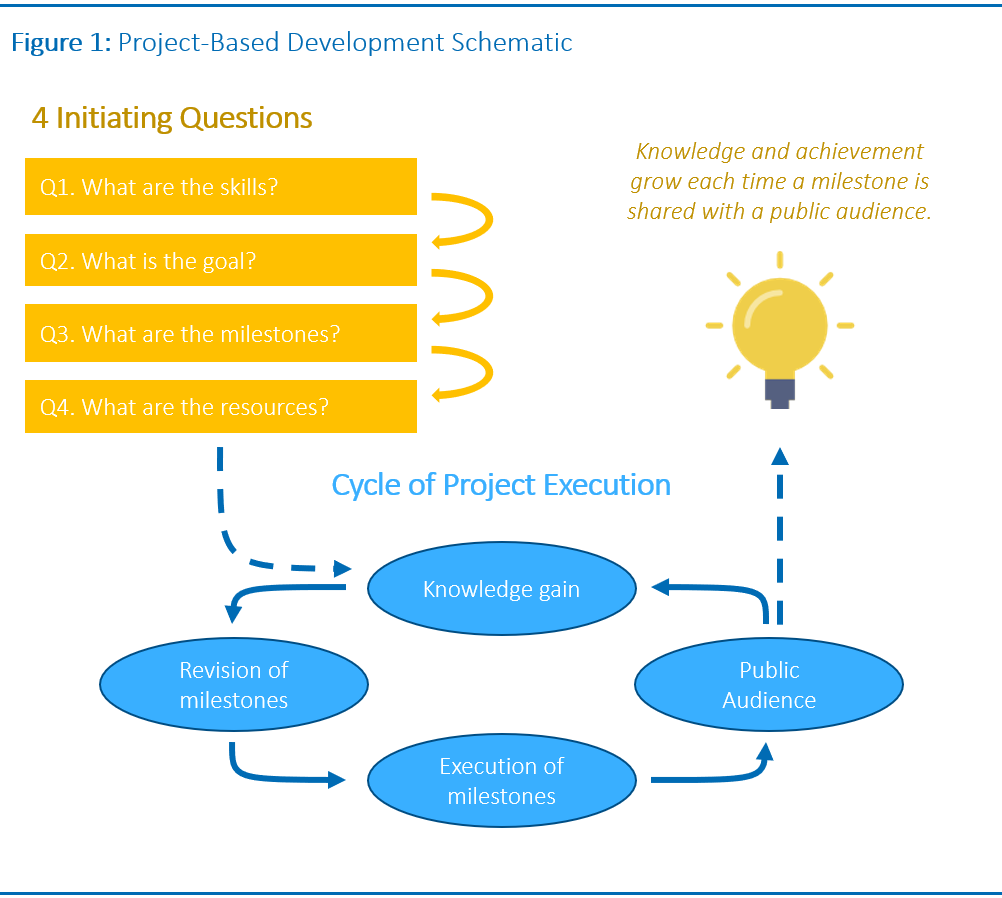Project-Based Development

By Joe Maginnis
Moon Island is defined by its projects. The website is primarily a place for its contributors to compile projects that represent the culmination of something they are passionate about. Each new project that is added brings a new insight or experience to the overall platform. Perhaps more important than that, however, is the fact that each project provides the contributor an opportunity to create something meaningful to them. I find great satisfaction in being able to tangibly experience the fruits of my labor, but I have also found that the inspiration to create something can be fleeting without an outlet to drive results. Moon Island and other platforms like it are those outlets. On top of all that, the community aspect of sharing projects on a public forum exposes us to both encouragement during the creation process and constructive feedback on results.
One of the most important additions, and one that I think is worth noting, is that PBD builds confidence by reinforcing the point that, “I can do something worth sharing.”
The concept of project-based development (PBD) is not a new one. It’s most often used in either educational or professional settings where it’s commonly referred to as project-based-learning (PBL). Under PBL, students or young professionals engage in a project that requires a practical understanding of key concepts that they are required to know. By learning and quickly applying new knowledge in a practical way, students in this type of program are meant to come away with a deeper understanding of said concepts. The Buck Institute for Education (BIE) defines PBL as “a teaching method in which students gain knowledge and skills by working for an extended period of time to investigate and respond to an authentic, engaging, and complex question, problem, or challenge.” I take BIE’s definition for project-based learning and add to it to arrive at what I call project-based development.

One of the most important additions, and one that I think is worth noting, is that PBD builds confidence by reinforcing the point that, “I can do something worth sharing.” Most literature on PBL seems to leave out this important outcome from engaging in projects. Perhaps one of the reasons it’s left out is because, in a traditional business or classroom setting, students and young professionals are restricted by the topics that the curriculum covers and, as a result, have less of a feeling of ownership of the result. Conversely, individuals engaging in PBD are forced to ask the following 4 initiating questions:
- What are the skills that I care about developing? (e.g. investing, writing, photography)
- What is a product that I would feel proud of making that uses one or more of the skills I’ve called out? (e.g. an economics journal, a short story, a photography blog)
- What are milestones that would allow me to share intermediate results and receive constructive feedback?
- What are the resources that I can use to improve my skills/results? (e.g. Business papers, online education resources, academic research, blogs)
By asking these questions, the learner is forced to design his/her own curriculum, which requires incrementally more understanding of the material as well as leadership, planning and other organizational skills. So next time you think to yourself, “wouldn’t it be cool to … ,” consider turning it into a project.



